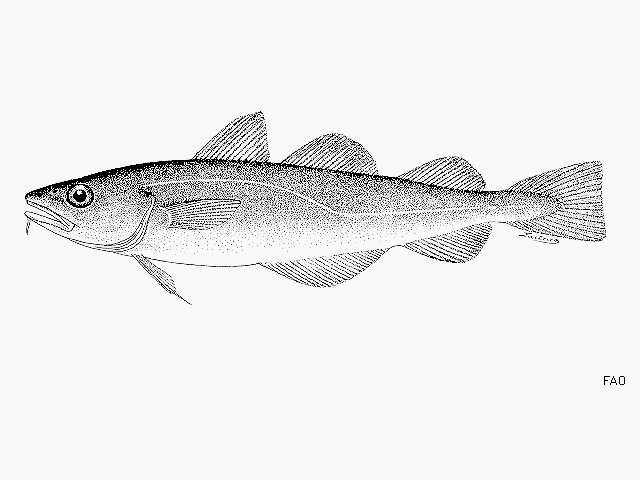| Gadidae (Cods and haddocks) |
| 30.5 cm SL (male/unsexed) |
|
demersal; brackish; marine; depth range 0 - 275 m, oceanodromous |
| Eastern Pacific: southeastern Bering Sea to central California, USA. |
|
Dorsal spines (total): 0-0; Dorsal soft rays (total): 46-54; Anal spines: 0-0; Anal soft rays: 38-46. Body olive green dorsally, pale ventrally; fins dusky marginally. |
| Generally found over sand (Ref. 1371). May enter brackish water (Ref. 1371). Young move into shallow waters in summer and fall, whereas adults usually stay in deeper waters (Ref. 28499). Feeds on shrimps, amphipods, isopods, gastropods, mussels and fishes (Ref. 1371). An important prey species (Ref. 2850). |
|
Not Evaluated (N.E.) Ref. (130435)
|
| harmless |
|
Ranges from Kuskokwim Bay, the Pribilof Is., and Unalaska I. in the Aleutian chain to southeastern Alaska (Ref. 6793). Sometimes forms huge schools in Alaskan waters (Ref. 28499). Called 'Wachna' by local inhabitants, it used to be a highly regarded food fish (Ref. 11844). Observed in what appears to be an annual event, M. proximus can be found washed ashore in Arctic Alaska (Point Hope, and Shishmaref). This event occurs in mid to late fall, around the latter half of October and probably coincides with spawning, consistent enough that Inupiat people who live here count on gathering these fish on the beaches. It does not require a storm event to put these fish on the beach. Probably the fish come near to shore to spawn and when that happens, the seals are attracted and, herd or push the fish ashore (often times a few herring and small flounder are also pushed ashore along with the tomcod) (pers.comm. Jack Donachy 11/12). Also Ref. 6876, 6885, 11366, 27436. |
Source and more info: www.fishbase.org. For personal, classroom, and other internal use only. Not for publication.

